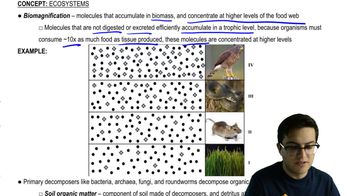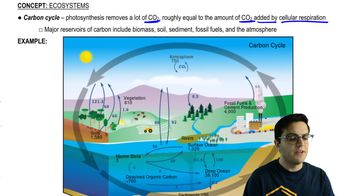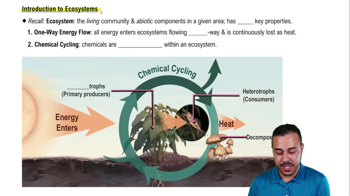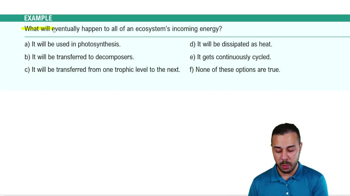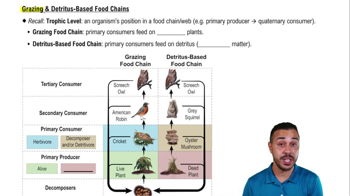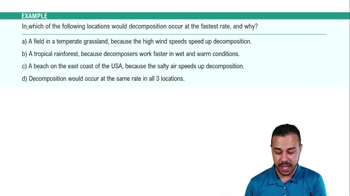There are limiting factors to the productivity of ecosystems. In aquatic ecosystems, light penetration can limit primary production. However, nutrient availability is going to severely limit primary production in aquatic ecosystems and is going to really be the bottleneck. And this will, in part, be due to limiting nutrients, which are elements that limit production, and if added, production will increase. Usually, these are going to be nitrogen and phosphorus, but not always. Now in terrestrial ecosystems, temperature and water availability tend to be the main limiting factors. And soils also have limiting nutrients, and like aquatic ecosystems, these usually tend to be nitrogen and phosphorus.
And here, you can see a chart that shows the relative amounts of photosynthesis based on light intensity. And as you can see, when light is very low, down in this area, photosynthesis just plummets. You might also notice that photosynthesis starts to peter off when light intensity gets too high, which can be due to the damaging effects of all that light. Of course, that's not really going to be much of an issue in most marine ecosystems where these organisms are just going to be happy to get some light.
Now coral reefs are the most productive biomes per area, and they're also one of the most threatened. They actually only take up a very small portion of the Earth, and they only account for a small portion of the total productivity of the Earth, but they are still the most productive biomes per area. Now, the most productive marine ecosystems generally are near coasts due to the high nutrient availability there. Terrestrial ecosystems are actually far more productive than marine ecosystems, and this is probably due to the availability of light.
Here in this chart, you can see the most productive marine ecosystems, and you can see that there are these areas in red concentrated in coastal waters. Now here you can see primary production in terrestrial environments, and hopefully, you'll notice that it's the regions known as the tropics that are going to have that very high primary productivity.
Now tropical rainforests actually contain the most productive terrestrial ecosystems in the world, and this is going to be due to the year-round warmth and rain. With that, let's go ahead and flip the page.






